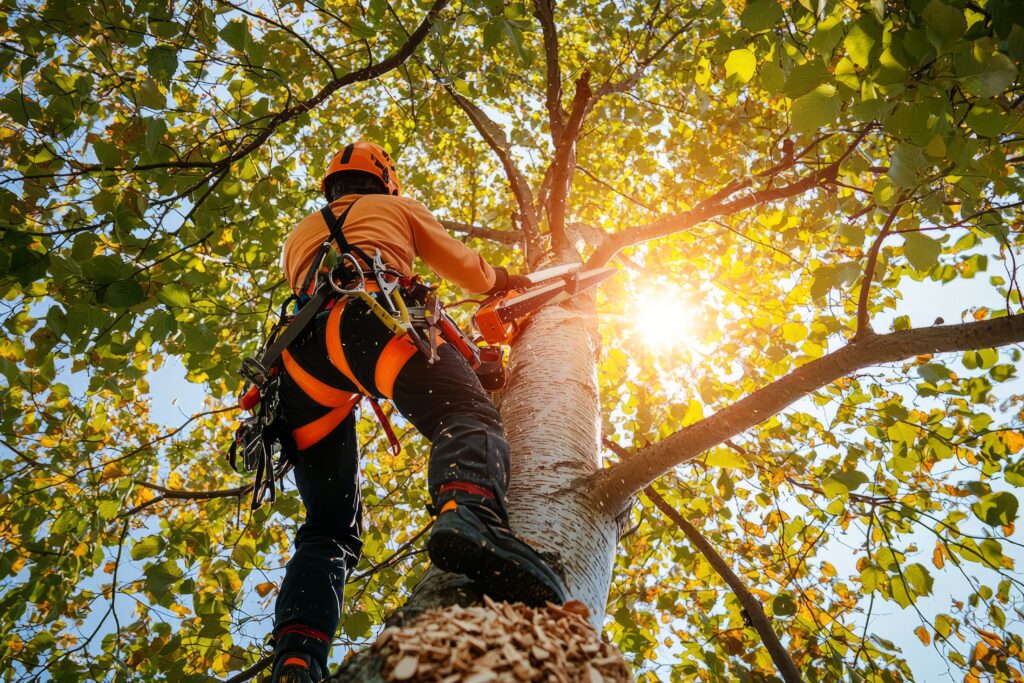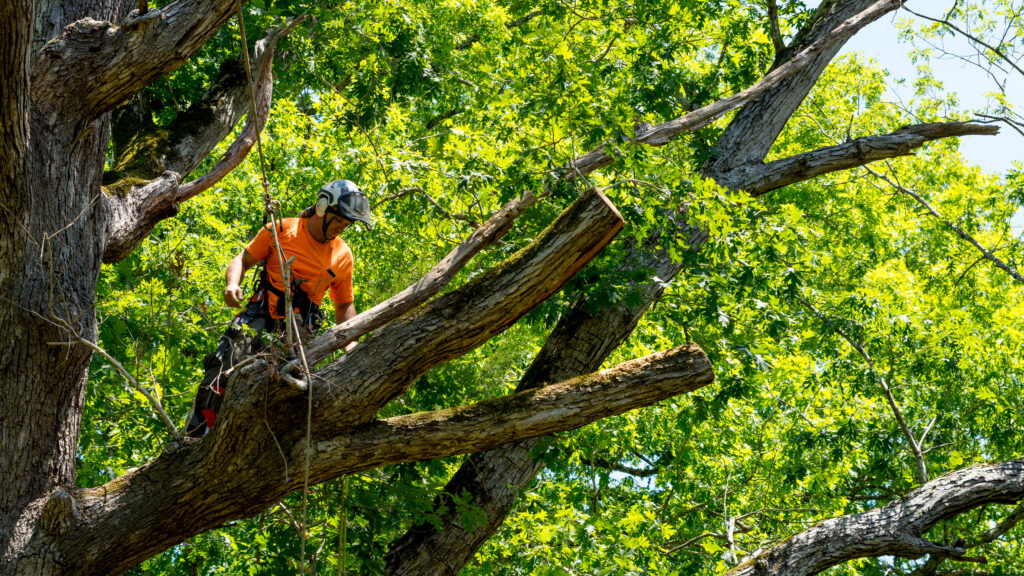
Protecting Tree Health Starts With the Right Approach
To the untrained eye, tree trimming and tree topping might seem like the same thing — after all, both involve cutting branches, right? But in reality, these two methods couldn’t be more different. One supports healthy growth and structural integrity. The other can leave your trees permanently damaged.
If you’re considering pruning back overgrown trees this fall, it’s important to understand the difference between professional tree trimming and harmful tree topping — and why working with certified arborists matters more than ever.
What Is Tree Topping? (And Why It’s Harmful)
Tree topping is the aggressive cutting of entire treetops or large upper branches, usually done to reduce height or “control” growth. While it may appear to solve a problem quickly, it causes serious long-term harm.
- Topping removes the tree’s natural canopy, shocking its system and triggering rapid, weak regrowth.
- Open cuts from topping leave trees vulnerable to insects, disease, and decay.
- Topped trees often become more dangerous over time, with poorly attached branches that can snap easily in storms.
What Is Professional Tree Trimming?
Trimming, when done correctly, is a controlled, strategic form of pruning that removes dead, diseased, or overcrowded limbs. It’s designed to improve health, balance structure, and enhance appearance — all without compromising the tree’s integrity.
- Trimming improves airflow and light penetration, reducing the risk of fungus and promoting healthy growth.
- It focuses on selective cuts at proper points, preserving the tree’s natural shape and strength.
- Routine trimming helps prevent storm damage and extend the life of mature trees.Protecting Tree Health Starts With the Right Approach

Why This Matters in the Fall
Fall is an excellent time for tree trimming because the structure of the tree becomes more visible as leaves begin to drop. With winter on the way, proper pruning now can prevent broken limbs caused by snow and ice accumulation.
- Weak or dead limbs are easier to identify and remove in fall.
- Preventive trimming before winter storms can protect your home, fence, and vehicles from falling debris.
- It’s safer to prune when the tree is entering dormancy — lowering stress and setting it up for strong spring growth.
How to Tell if a Tree Has Been Topped
If you’ve moved into a new property or suspect past damage, here are common signs a tree has been topped:
- Abruptly cut branches with no natural taper or smaller branch extensions.
- Dense clusters of weak shoots (called suckers) sprouting at the ends of large limbs.
- Flat-topped appearance or missing central leader (the tree’s main vertical stem).
If you spot these symptoms, it’s best to have a certified arborist evaluate the tree and recommend restorative trimming if possible.
Final Thoughts: Choose Care Over Convenience
Topping may seem like a fast fix, but it leads to dangerous, unhealthy trees — and often results in full removal later. Proper trimming, on the other hand, promotes beauty, balance, and longevity.
At Allen’s Tree & Fence, we proudly offer professional tree trimming in Clifton Park and the surrounding areas, using industry-standard techniques to ensure your trees remain safe, strong, and beautiful year-round.
Book your fall tree trimming today and protect your landscape the right way — no shortcuts, no damage, just expert care.
